Subtotal: $80.00
6 shoelace patterns to give your shoe a strong hold!
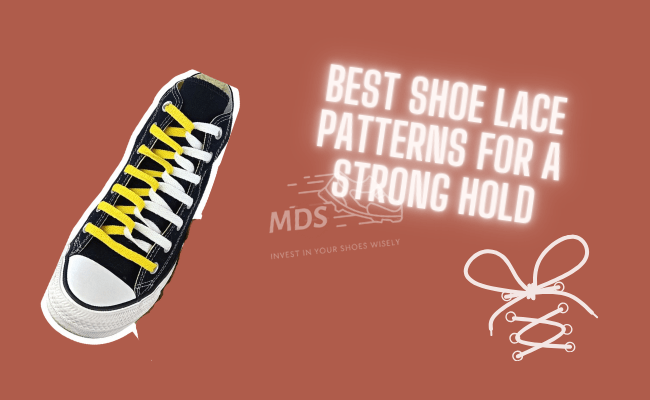
Do you know shoelaces can be tied in more than 250 patterns? This has always fascinated me. Apart from encouraging me to collect different sneakers, cleats, and boots, my parents also taught me different shoelace patterns! My mother taught me fancy shoelace patterns such as Diamond lace and Spider web lacing during my childhood. And my father taught me the standard knot to tie up my school shoes. In addition, I tried shoe lacing patterns like footbags, twisties, sawtooth, zippers, hash, ladders, etc.
Once I went to a summer camp in 8th grade. I wore my Nike sports shoes. There was a competition for tying maximum shoelace patterns in 5 minutes. I participated in that and tried 9 shoelace patterns! I won!
I feel that, sometimes people find it hard to tie shoelaces in different patterns apart from the classic criss-cross. If you are someone struggling to lace up your shoes in different styles, this article is for you! I have shared a detailed overview of six popular types of shoelace patterns, the right way to tie them to your shoes, and everything else. Whether you’re younger or older, trying these styles will make you stand out in the crowd! Let’s move ahead to learn more about them.
Top 6 shoelace patterns
If you have been tying your shoelaces in a standard classic pattern, you may want to change the style- yes, it gets monotonous after a point. Well, here’s a list of six of the most interesting shoelace patterns.
1. The classic criss-cross
Most of us learned to tie our shoes with this style in childhood. It became a core memory of being unable to tie the laces of school shoes when we were children. But, with practice and patience, we all learned to do it like a pro!
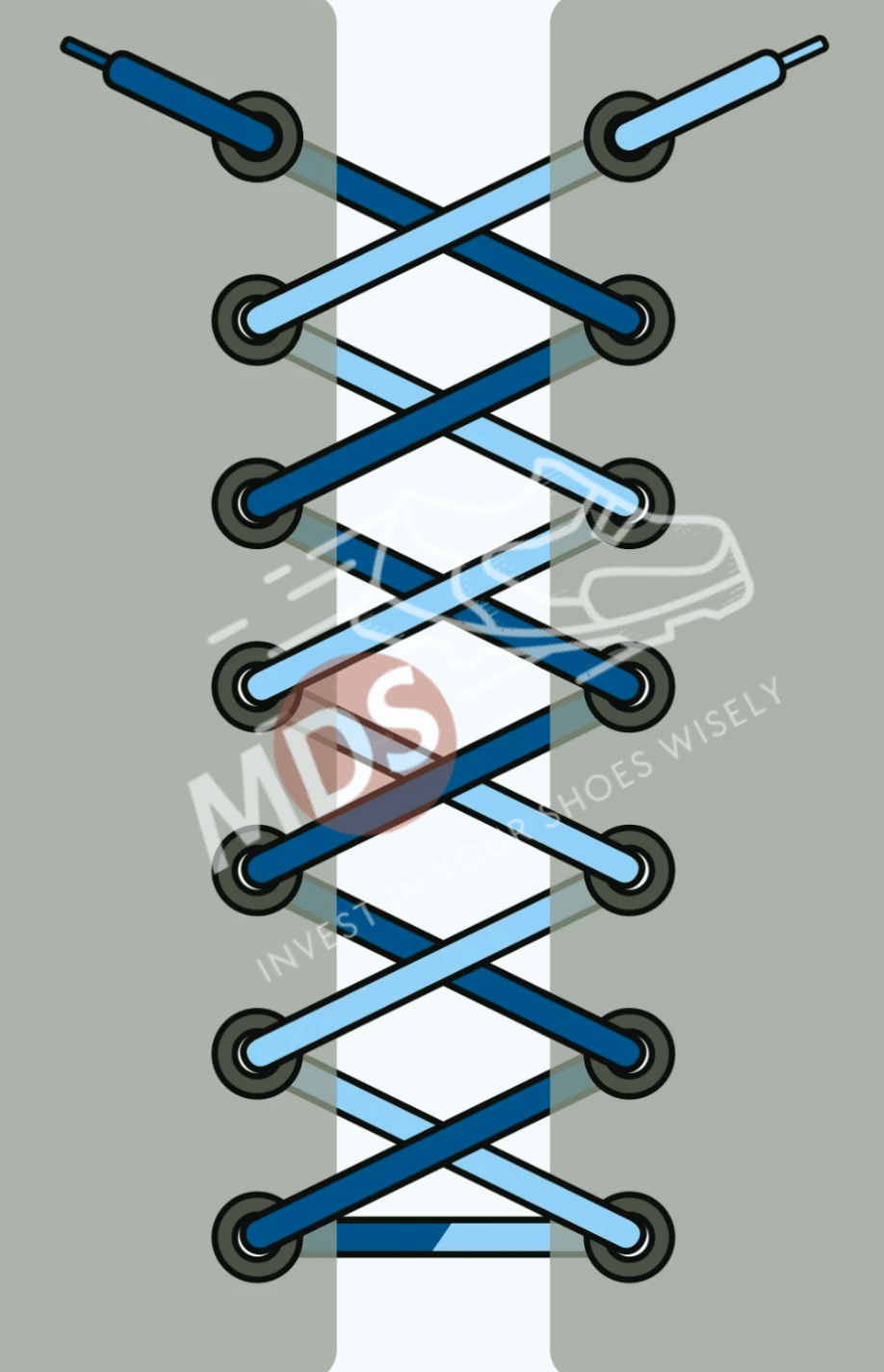
If you want something simple, classic, and reliable, the criss-cross lacing is your solution! This pattern always helps you look the best with casual, cool, or professional outfits. If you ever see a lace having neat X patterns across the shoe with a snug fit, it is none other than criss-cross lace.
How to do it?
- Keep both ends even and lace from the inside out. Always, start with the bottom eyelets first.
- Cross the right lace to the left and the left one to the right. Now thread both laces to the next eyelets.
- Continue tying laces until you reach the top eyelets.
- Finally, tie both laces with an adequate bow-knot for a proper fit.
You can watch the following video to tie this lace pattern in 1 minute:
2. The over-under lace
This easy pattern offers stronger snug durability, lesser friction, and reduced lace fraying. Runners, hikers, and athletes prefer this lacing style for their sports and running shoes. These laces prevent your shoes from slipping out of the ankles.
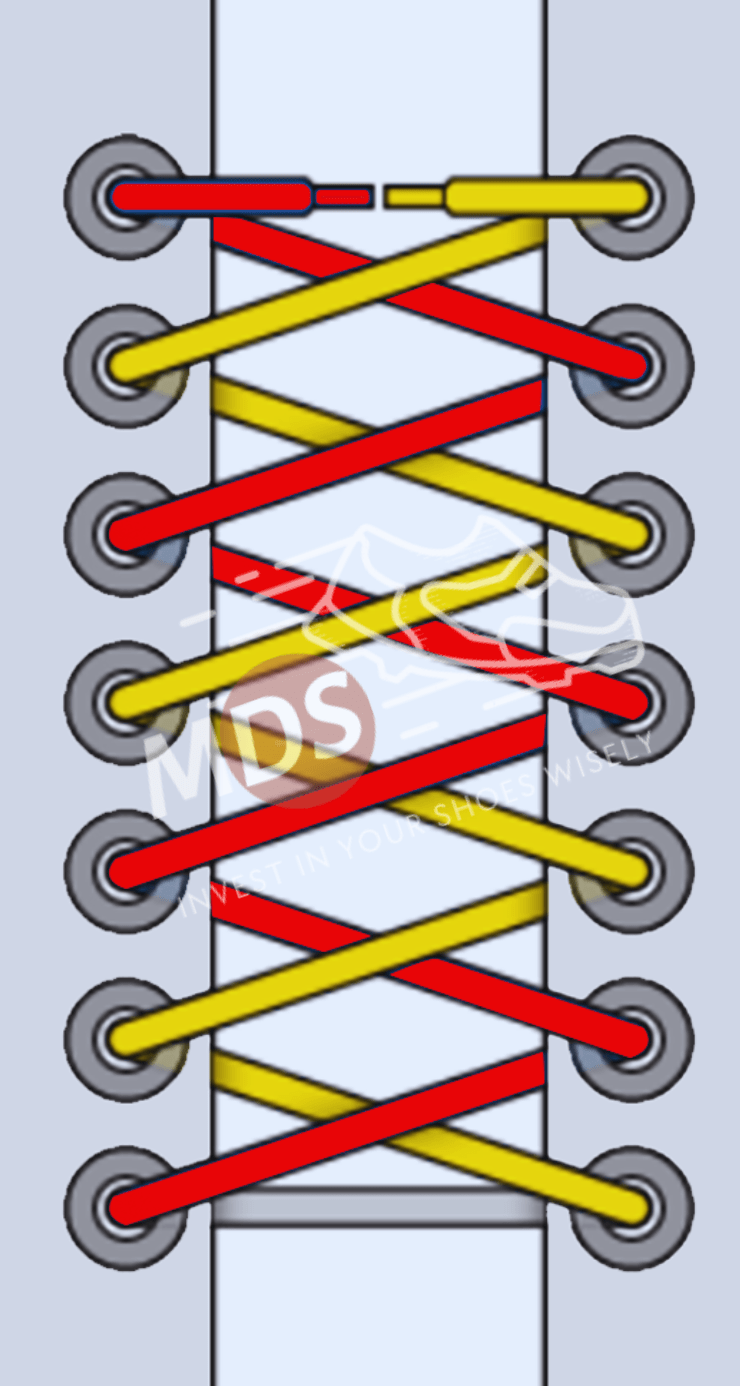
Quick steps to do it:
- Start from the bottom eyelet with equal-length lace.
- Loop lace from inside out and vice versa.
- Instead of crossing again, thread the lace’s end up on the same side and insert it into the next consecutive top lace hole.
- Repeat these steps to the top. Tie a knot after threading the lace in all holes.
You can refer to the following video to learn how to tie over-under laces in detail:
3. The loop-back lace
I have a beautiful collection of 30 thick and contrast-colored laces that suit adorably on casual shoes like sneakers, canvas, etc. Whenever I go clubbing, bowling, or amusement parks with my wife, I try loopback laces! They give a cool look along with a great snug fit.
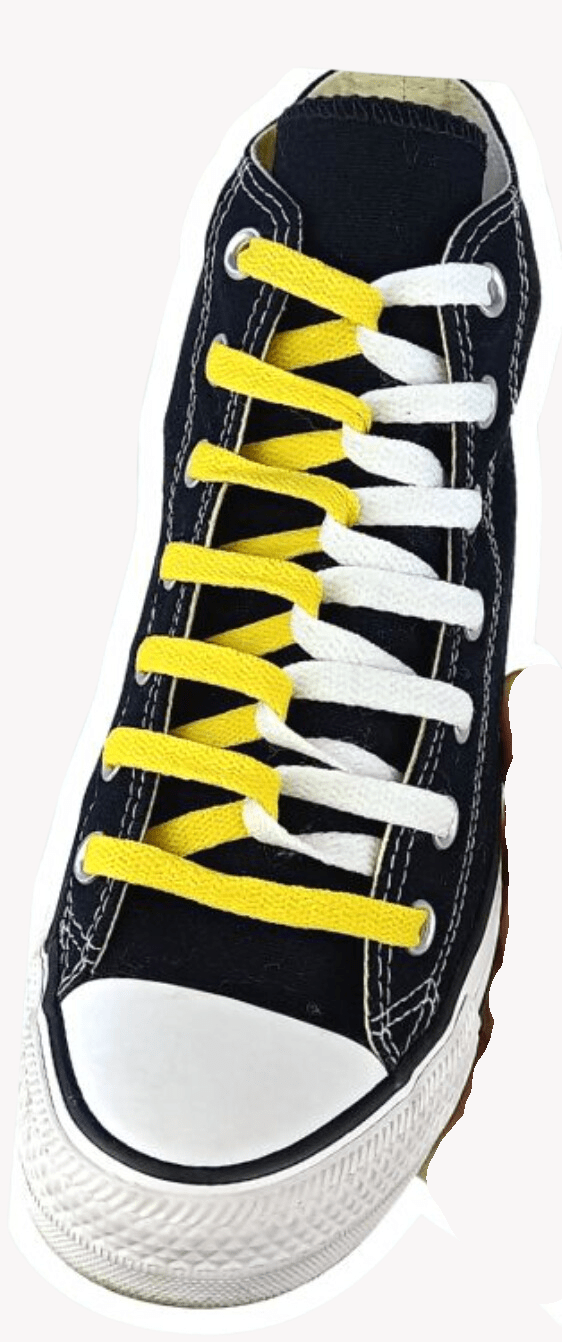
I feel that this style is the total opposite of criss-cross lacing! Narrow feet people, basketball players, and canvas lovers must try lacing their shoes with this pattern.
Here’s how to tie it:
- Insert the laces in the bottom eyelets with even ends. Now, thread the laces from the inside out.
- Now, here’s the tricky part! Cross the right lace over to the left side and loop it to the next hole. Follow the same process for the left lace too.
- Continue threading laces until you reach the top eyelets.
- Tie the laces once you finish looping.
Kindly watch the following video to see how to tie loopback lace:
4. The ladder lace
As the name indicates, it looks like a ladder! This lace gives proper snugness, pressure, and fit in the shoe.
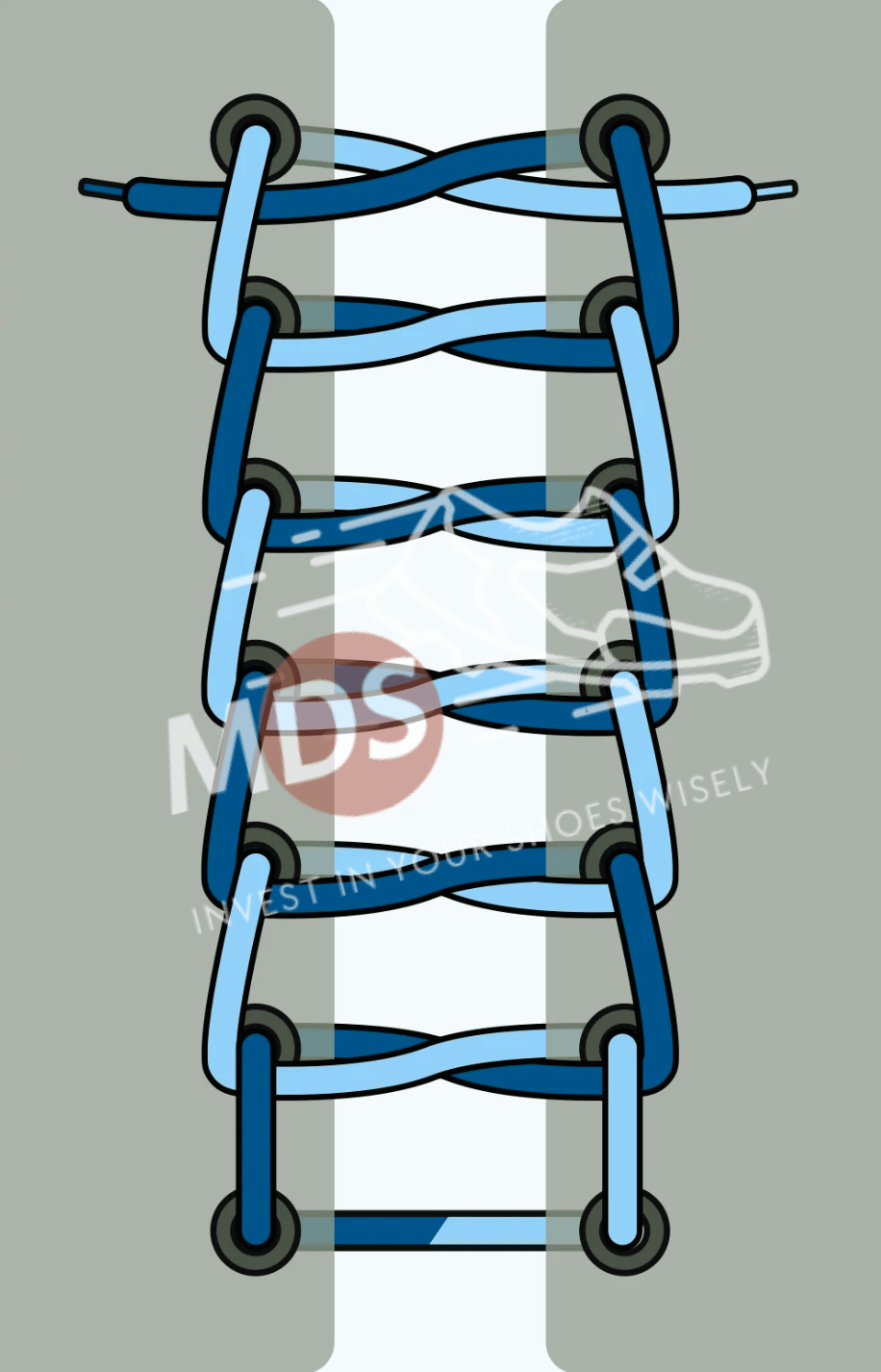
Mostly, paratroopers, military people, police, etc., professionals prefer this lacing pattern for more stability and arch support.
Do it this way:
- Thread even length of laces from the bottom lace holes.
- Add a vertical loop in consecutive eyelets on the same side.
- Keep a small gap between the lace and the shoe.
- Loop the lace across the shoe. Thread them via the gap under the opposing lace.
- Repeat this process until you reach the top eyelets and tie them with a form knot.
Watch the following tutorial to learn about ladder laces in more detail:
5. The spider web lace
If you want a unique and symmetrical web-like lacing, the Spider lace style can help you. This style looks best on sneakers, military boots, high boots, and high tops having a wide spacing between the sides.

This pattern offers size adjustment to the foot, less fraying, and arch stability.
Steps to do it:
- Adjust both ends in an even length and thread the less from the bottom.
- Cross the laces into the opposing lace hole and loop them in the adjacent eyelet.
- Pull both laces upside down towards the next eyelet on their sides.
- Weave both laces across the opposing loop in the horizontal direction.
- Continue crossing and weaving till you get a symmetrical web-like pattern.
- Tie the lace with a firm knot when you reach the top laceholes.
You can refer to this video to understand spider-web lacing:
6. The zipper lace
If you wish for a perfect fit with cool looks, zipper lacing can be your answer! This lacing style looks dashing on Vans, Canvas shoes, sneakers, long boots, etc.
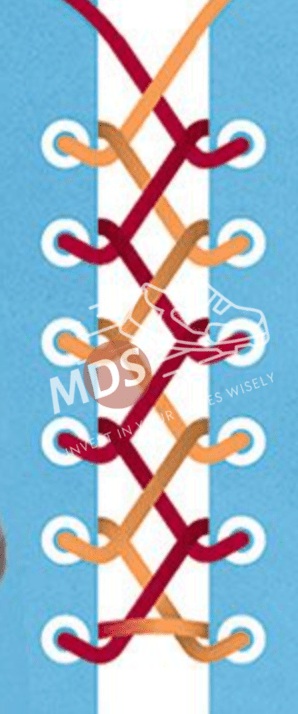
Lace it this way:
- Loop the lace in the bottom lace holes inside out with even ends.
- Pick the right lace, loop in the adjacent upper eyelet, and cross it into the opposing eyelet. The same applied to the left lace. This is called ‘first zig-zag’.
- Continue threading lace in this zig-zag pattern until you get a zipper-like structure.
- Knot both ends of the lace when you reach the top.
Kindly watch the following video to see how to tie zipper lace:
Other unique shoelace patterns
Apart from the above methods, here are some more unique lace patterns that you must be heard of:
- Bowtie lacing
- Straight lacing
- Army lacing
- Wide-foot lacing
- Gap lacing
- High-arch lacing
- Double-back lacing, etc.
Marty’s final words
Trying various shoelace patterns can be fun and helpful for your foot support. In my two cents, I suggest, be patient, keep focus, practice these patterns, and lace up your shoes perfectly! Once you master these techniques, it’d be easier to tie up- every single time.
So, lace them up right and slay that cool look!
What kind of shoelace styles do you like the most? Do let me know in the comments below!
FAQs
Now, let us look at some of the most popular questions concerning shoelace patterns.
1. What are popular fabrics for different types of shoelaces?
Shoelaces can be made from cotton, nylon, textured polyester, spun polyester, etc.
2. What is the best shoelace shape?
Round and flat-shaped shoelaces are most popular because of their high durability, low fraying, and effective support.
3. What is the most secure shoelace pattern?
The ‘Sherpa knot’/ ‘Tibetan Trekking Knot’ is the most secure shoelace pattern.
4. What is the best shoelace pattern for running shoes?
The Over-Under Lace pattern is often recommended for running shoes. It reduces lace friction and enhances durability, making it perfect for long-distance running.
5. Can I use these patterns on all types of shoes?
Yes, these patterns can be used on a variety of shoes, including athletic, casual, and even dress shoes. Just make sure the eyelets and lace lengths are compatible with the pattern you choose.
6. How often should I replace my shoelaces?
Shoelaces should be replaced when they show signs of wear and tear, such as fraying, breaking, or losing their elasticity. Depending on usage, this could be every few months to a year.
7. Are there any tricks to make lacing easier?
Using lace anchors or locks can make lacing easier and more secure. Threading the laces while the shoes are off your feet can help ensure even tension throughout.
8. Can these patterns help with foot pain or discomfort?
Yes, some lace patterns can alleviate foot pain or discomfort by providing a more customized and secure fit. Patterns like the Loop Back Lace can reduce pressure points and improve overall comfort.

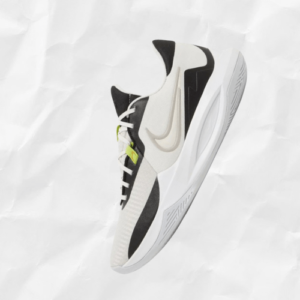 NIKE PRECISION 6 PHANTOM LIGHT IRON ORE
NIKE PRECISION 6 PHANTOM LIGHT IRON ORE